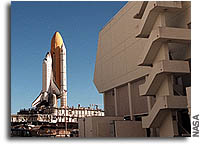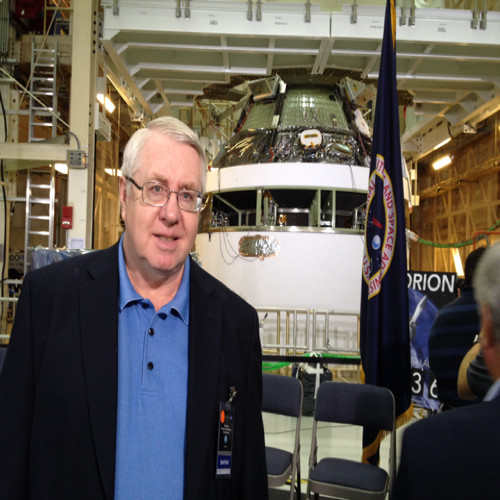Shuttle Shakeup Eyed For Cost, Safety Goals

Copyright 2002 Aviation Week and Space Technology. This article appears in the 23 Sep 2002 issue and is reprinted here by permission of the author.
NASA is moving to change its management and procurement strategy for billions
of dollars in shuttle, Station and Space Launch Initiative (SLI)
contracts–including a possible full restructuring of the shuttle program–in
the wake of a Rand Corp. study which found that contract management and
safety reform is essential across all U.S. manned space projects.
NASA has just hired three of the 12 Rand team members to jump-start reforms
within the space agency.
The Rand-led effort was focused on a shift to shuttle competitive sourcing in
place of privatization, but found such efforts must be closely coupled to the
International Space Station and especially to SLI developments to replace the
shuttle.
Aviation Week & Space Technology obtained a copy of the report by the
Rand-led “Shuttle Competitive Source Task Force,” whose members spoke on
background.
Actions from the report could significantly affect hundreds of civil service
jobs at the Kennedy, Marshall and Johnson space centers. “A shift to
competitive sourcing is likely to transfer many personnel out of NASA,” the
report said.
It could also greatly affect the multibillion-dollar United Space Alliance
joint Boeing/Lockheed Martin Space Flight Operations Contract (SFOC) at
Kennedy.
“Implementing some competitive source options will likely require breaking up
the SFOC contract; others could be built upon the current SFOC structure,”
the task force said.
The closely held assessment is to be briefed to NASA Administrator Sean
O’Keefe on Sept. 23. O’Keefe plans to use the Rand findings as another major
weapon to bring NASA cost management into the 21st century. But the report
will also spark more debate on space shuttle launch safety as those moves are
made.
“Decaying infrastructure and shuttle component obsolescence . . . are
significant contributors to a future declining safety posture,” the Rand
report said. The report said NASA should consider restructuring the shuttle
program to restrain costs within shrinking budgets and to facilitate
competitive sourcing–short of privatization. It proposed several management
options on how to restructure the program and the impact of those options
(see diagrams and p. 33).
The Rand assessment also raises cost and contracting issues that challenge
the wisdom of retaining the Marshall Space Flight Center shuttle procurement
structure for main engines, solid rocket boosters and external tanks.
The report indicates that transferring those Marshall contract
responsibilities to the Kennedy Space Center, under corporate as opposed to
NASA management, should be assessed for potential annual multimillion dollar
savings. A consolidation of main engine propulsion work at the Stennis Space
Center, Miss., instead of having it spread across Marshall, Stennis and at
Edwards AFB, Calif., could also bring savings.
And the report said shuttle infrastructure repair and upgrade costs–a factor
in decisions on keeping the shuttle operating toward 2020–may be as much as
$800 million–about double NASA’s current estimates. A better timetable for
when the shuttle will truly be replaced is another key goal.
The issues raised by the Rand study will also draw into question whether NASA
should maintain its current approach toward the $50-60-billion Space Launch
Initiative designed to develop options for replacement of the shuttle by
2020.
The study team was made up of about a dozen nationally known experts from
business, finance, management and technology, supplemented with experienced
space personnel.
There are no criticisms of SLI in the Rand study–other than a strong view
that shuttle reform would be highly synergistic to the course of SLI. But
Rand team members have met with members of a Langley Research Center team
charged to review SLI as part of the overall U.S. Integrated Space
Transportation Plan. That team works under NASA’s Independent Project
Assessment Office based at Langley.
RAND MEMBERS said both they and the Langley team are concerned about the
accuracy of NASA’s current SLI cost estimates–findings that could spark
management and contractor changes in SLI. Langley team members said their
findings are still secret.
O’Keefe requested the Rand competitive source analysis for guidance on the
shuttle privatization issue and how to bring the annual $3.8-billion shuttle
program in line with the Bush administration’s “Management Agenda” for the
federal government.
The Bush agenda has as its guiding principle “that government should be
market-based.” The assessment found that the shuttle program’s true annual
cost is $3.8 billion–about $600 million more per year than calculated by the
agency–but that the program is generally well run even if the structure is
flawed.
The results are being presented to O’Keefe just as the shuttle is scheduled
to return to flight early next week after a three-month grounding caused by
hydrogen flow liner cracks. The liftoff of Atlantis is scheduled for Oct. 2
at an undisclosed time between 2-6 p.m. EDT to help thwart any terrorist
threats ( AW&ST Sept. 16, p. 60).
The report also comes just a week after O’Keefe was forced to cancel
Kennedy’s Checkout Launch and Control System (CLCS) project that is four
years behind schedule with costs threatening to double the original $207
million estimate ( AW&ST Sept. 2, p. 42). More than 400 jobs could be
affected by the cancellation, which O’Keefe believes was announced here in a
callous manner. But the CLCS issue pales in comparison with the personnel and
safety issues in the Rand assessment.
The report found “full-scale privatization of the shuttle program is
premature” but proposed several other competitive sourcing options.
The findings, however, will generate controversy among astronauts and
managers over shuttle safety oversight. This is, in part, because portions of
the Rand findings run directly counter to a major shuttle privatization
review led by the Johnson Space Center in late 2001. That assessment said any
delay in shuttle privatization would threaten shuttle safety ( AW&ST Dec. 24,
2001, p. 36).
“We debunked the Johnson findings,” a Rand participant said. “All the Johnson
team data was skewed toward NASA’s current culture–and a cultural change in
NASA is required.”
“Competitive sourcing could significantly expand private sector
responsibility for safety,” the report said.
But Rand members said Kennedy Space Center Director Roy Bridges, a former
astronaut and retired major general who also commanded the Air Force Flight
Test Center at Edwards AFB, Calif., told them that some commercial concepts
could end up “with a shuttle being flown into the water.”
RAND TEAM participants pointed out, however, that had “corporate contractors”
had a vote the day Challenger exploded, no launch would have taken place
because Challenger was launched after a NASA manager overruled strong
objections from Thiokol.
Another Rand team member stressed that a truly independent safety oversight
group formed as part of shuttle restructuring could step in rapidly to
prevent problems. He said that if such an organization were in place earlier,
it not only could have prevented Challenger, “but may also have averted” the
near-disastrous Apollo 13 emergency and the 1967 Apollo 1 pad fire that
killed astronauts Gus Grissom, Ed White and Roger Chaffee.
“The worry is that the transition from the current NASA-led safety oversight
structure to a new independent safety body be done properly without adding
complications,” he said.
The Rand team proposes that “Three-Key” structure be established where an
independent safety organization separate from NASA has a “key,” the prime
contractor has a key, and NASA has a key. To validate the “certificate of
flight readiness,” all three participants would have to turn their keys–in a
bureaucratic sense–to approve launch.
The Rand report has praise for current shuttle safety efforts by NASA and
United Space Alliance but also notes that the metrics used to calculate
current shuttle safety “do not provide true insight into the shuttle
programs’ (SSPs) state of safety.”
“NASA has been attempting to generate . . . ‘leading indicator’ safety
metrics, but to date has not been successful,” Rand found.
“While there is a strong safety focus, there are still too many shuttle
safety problems being discovered ‘by chance’ to say you really have an
effective safety program,” a study team member said.
About 90% of the shuttle program work is done by several thousand contractor
personnel. But the Rand report found contractors have only about 10% of the
management oversight authority–with NASA retaining 90% of that role.
“But NASA has not implemented a program of management reforms to crystallize
efficiencies and cost savings to get ready for competitive sourcing,” the
Rand study found. More aggressive competitive sourcing could change that and
“theoretically” save hundreds of millions of dollars in shuttle, station and
SLI costs if enacted now.
The group had two key findings in this regard:
* Program “right sizing” could lead to streamlined, lower cost and safer
operations. The “right sizing” goal means providing Houston with “full
managerial authority over shuttle infrastructure and personnel.” That role is
now largely shared with Marshall and run as if the shuttle–21 years into
flight operations–is still a research and development system.
“If ‘right-sizing’ is not implemented it is unlikely that the current budget
blueprint will cover future funding requirements,” the report said.
Transformation of the shuttle program now “into an operations program” with a
field center matrix management structure could also save costs.
“The program now is very ‘NASA center-centric.’ You have four major NASA
centers with overlapping responsibilities as they were set up for the
development program,” a study participant said. That should be restructured
to a “program-centric” both geographically and contractually with the
functions consolidated at fewer centers–primarily Johnson and Kennedy.
Again, Marshall’s role is a wild card, but its engineering expertise must be
protected.
“Before you can move into competitive sourcing, you need to realign and
streamline the program so you can package something the private sector can
deal with,” a team member said.
By making such moves, NASA could reduce the overall shuttle cost by nearly
10%, making major cost savings as the program finally tails off, the report
said.
But making such changes will require O’Keefe–and the Bush administration–to
expend a lot of political capital. The Rand report suggests that if O’Keefe
is not willing to make such changes, shuttle program costs will continue to
grow.
“If NASA cannot overcome political and bureaucratic resistance to ‘right
sizing’–the annual cost of the space shuttle program will likely rise,” the
Rand team found.








